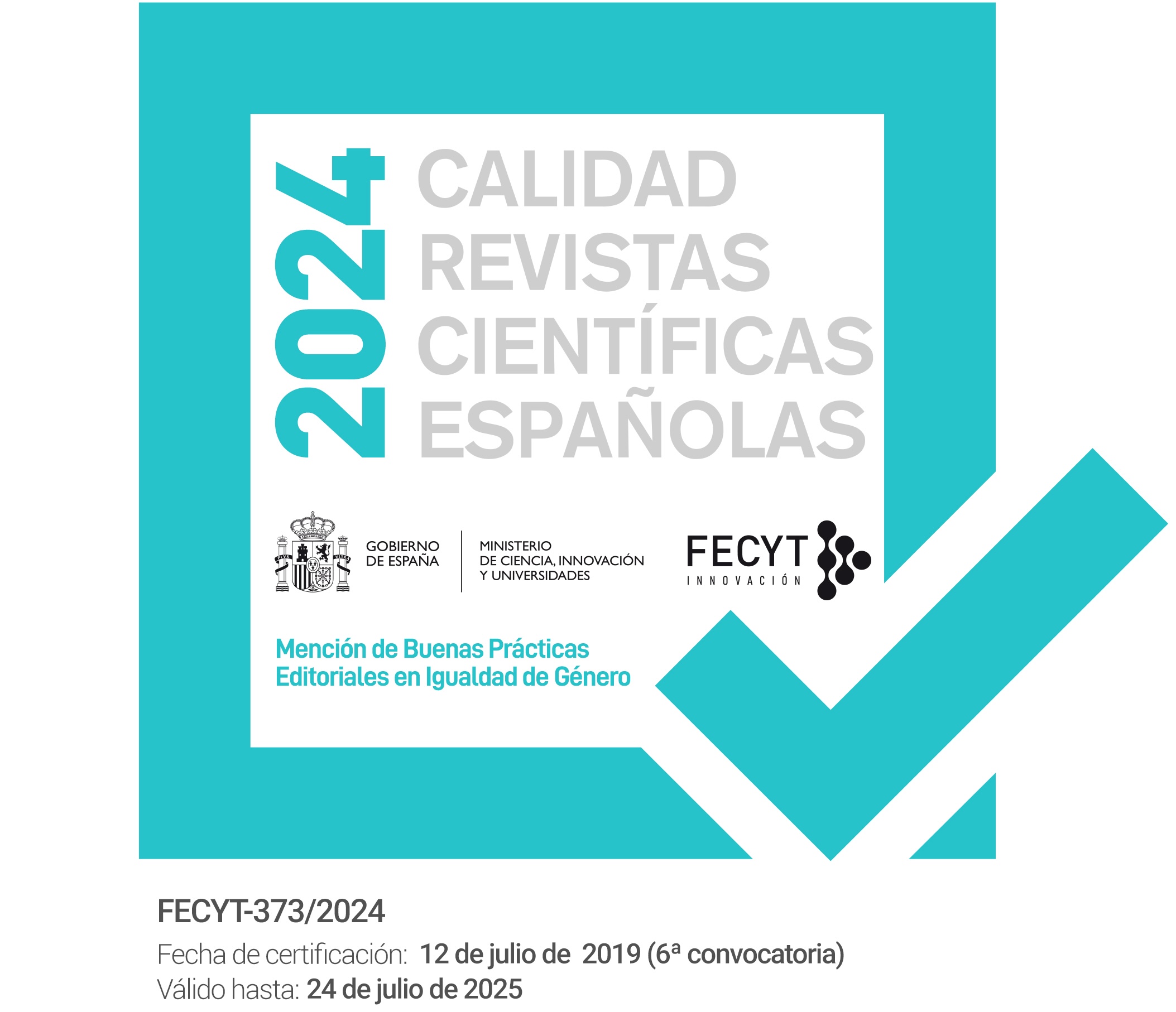Glitch: notaciones para tejer con lo que desaparece
DOI:
https://doi.org/10.1344/Lectora2021.27.8Paraules clau:
tejer, mujeres, trabajo, arte, tecnologíaResum
Como investigadora y comisaria he tratado de acentuar ciertos entrecruzamientos que acontecen entre las esferas del trabajo, la tecnología y el arte y desde ellos problematizar cómo el capitalismo transforma la vida en plus-valor. En este texto volveré a recorrer composiciones relacionadas con estas esferas intentando desprenderme de lo que el trabajo produce bajo los imperativos del capital. Escribiré como mujer que incorpora notaciones en las aperturas y ocultamientos de la trama de un tapiz común. Enhebraré hilos que, sin formar pieza con la máquina productiva, generen patchworks simbólicos y biopolíticos con los que, como los glitches, interrumpir los flujos lineales de la vidas enajenadas por el capital.
Referències
Albers, Anni (1974), On Weaving, Londres, Studio Visa Publishers.
Atwater, Mary Meigs (1951), The Shuttle Book of American Hand Weaving, Nueva York, The Macmillan Company.
Bella, María (2017), "Ser crebeira", Accesos, 1: 34-39.
—(2018a), "Nuevos imaginarios artísticos", Sin Objeto, 1: 68-83.
—(2018b), "Pensar la precariedad desde el arte", Trabajo en arte contemporáneo: precariedad y alternativas. Actas del I Congreso Internacional Prekariart, Bilbao, Universidad del País Vasco: 17-30.
Broude, Norma y Mary D. Garrard (1994), "Introduction: Feminist and Art in the Twentieth Century", The Power of Feminist Art: The American Movement of the 1970s, History and Impact, Norma Broude y Mary D. Garrard (eds.), Nueva York, Harry N. Abrams: 10-28.
Chan, Audrey; Alexandra Grant y Elana Mann (2013), "Rupture and Continuity in Feminist Re-performance", Afterall: A Journal of Art, Context and Enquiry, 33: 38-45.
De Landa, Manuel (1991), War in the Age of Intelligent Machines, Nueva York, Zone Books.
Dickens, Charles (2004), Hard Times for These Times, Adelaida, The University of Adelaide Library. [1854]
Federici, Silvia (2018), El patriarcado del salario. Críticas feministas al marxismo, Madrid, Traficantes de Sueños.
Galloway, R. Alexander (2004), Protocol. How Control Exists after Decentralization, Cambridge, Massachusetts & Londres, The MIT Press.
Graves, Robert (2012), The Greek Myths: Volume One, Edimburgo, Penguin.
Gunn Allen, Paula (1989), Spider Woman's Granddaughters: Traditional Tales and Contemporary Writing by Native American Women, Nueva York, Ballantine Books.
—(1991), Grandmothers of the Light: A Medicine Woman's Sourcebook, Boston, Massachusetts, Bacon Press.
Harlizius-Klück, Ellen y Giovanni Fanfani (2016), "(B)orders in Ancient Weaving and Archaic Greek Poetry", Spinning Fates and the Song of the Loom. The Use of Textiles, Clothing and Cloth Production as Metaphor, Symbol and Narrative Device in Greek and Latin Literature, Marie Louise Nosch; Mary Harlow y Giovanni Fanfani (eds.), Oxford & Philadelphia, Oxbowbooks: 61-100.
Hart, George (2005), The Routledge Dictionary of Egyptian Gods and Goddesses, Abingdon & Oxon, Routledge.
Homero (1967), The Odyssey, Richmond Alexander Lattimore (trad.), Nueva York, HarperCollins.
Knott, Stephen (2015), Amateur Craft. History and Theory, Bloomsbury, Londres, UK.
Müller, Moïra Anne (2015), Destino y libertad en el pensamiento antiguo, Tesis doctoral, Barcelona, Universidad de Barcelona. <http://hdl.handle.net /2445/67328>
Parker, Rozsika (1996), The Subversive Stitch: Embroidery and the Making of the Feminine, Londres, The Women’s Press.
Plant, Sadie (1995), "The Future Looms: Weaving Women and Cybernetic", Body & Society, 1 (3-4): 45-64.
—(1998), Zeros and Ones: Digital Women and the New Technoculture, Londres, Fourth Estate.
Platón (2019), La república. Libro primero, Programa de Redes Informáticas y Productivas de la Universidad Nacional de General San Martín (UNSAM). <https://circulosemiotico.files.wordpress.com/2019/03/platc3b3n-la-republica.pdf>
Rico, Santiago Alba (2017), Ser o no ser (un cuerpo), Barcelona, Seix Barral.
Smith, T’ai (2014), Bauhaus Weaving Theory. From Feminine Craft to Mode of Design, Minneapolis & Londres, University of Minnesota Press.
—(2015), "The Event of a Thread", Textiles: Open Letter, Frank Rike y Grant Watson (eds.), Berlín, Sternberg Press: 36-47.
Stein, Dorothy K. (1984), "Lady Lovelace's Notes: Technical Text and Cultural Context", Victorian Studies, 28 (1): 33-67.
Sullivan Kruger, Kathryn (2001), Weaving the Word: The Metaphorics of Weaving and Female Textual Production, Londres, Associated University Presses.
Trivedi, Lisa (2007), Clothing Gandhi's Nation Homespun and Modern India, Bloomington, Indiana UP.
Weissberg, Liliane (2010), "Ariadne's Thread", Modern Languages Notes, 125 (3): 661-681.
Descàrregues
Publicades
Com citar
Número
Secció
Llicència
Els autors i les autores conserven els drets d’autoria i atorguen a Lectora: revista de dones i textualitat el dret de difusió. L'’obra serà disponible simultàniament sota una Llicència de Reconeixement-NoComercial- SenseObraDerivada de Creative Commons que, si no si indica el contari, permet compartir l’obra amb tercers, sempre que aquests en reconeguin l’autoria i la publicació inicial en aquesta revista.
Els autors i autores són lliures de fer acords contractuals addicionals independents per a la distribució no exclusiva de la versió de l’obra publicada a la revista (com ara la publicació en un repositori institucional o en un llibre), sempre que se’n reconegui la publicació inicial en aquesta revista.
S’encoratja els autors i autores a reproduir la seva obra en línia (en repositoris institucionals, temàtics o a la seva pàgina web, per exemple), amb l’objectiu d’aconseguir intercanvis productius i fer que l’obra obtingui més citacions (vegeu The Effect of Open Access, en anglès).




